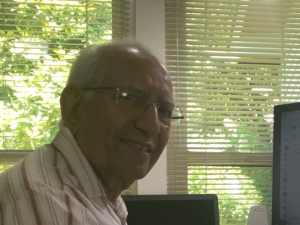Any review of the new books that translate the verses of Sri Guru Granth Sahib (SGGS) must describe what existing vacuum the new book would fill.
Editor's note: The five books being reviewed are:
1 Understanding Nitnem: Jup, Sodar, and Sohela. 308 pages.
2 Understanding Sidh Goshat. 271 pages.
3 Understanding Anand. 162 pages.
4 Understanding Asa Di Vaar. 289 pages.
5 The Hijacking of Sikhi. 420 pages.
An in-depth look at the most Gurbani translations till recently gives rise to several concerns, issues, and approaches· The most translations render Guru Nanak's messages as regurgitations of the missives already in vogue in India's religious traditions and teachings. Most old concepts mentioned in Gurbani remained intact in most translations to date. The examples are:–mantras, heavens, hell, lives after death, transmigration of the soul, angels of death, dharma raj, place of ancestors, dasam duar, and dozens of other concepts, stories, and rituals concocted by clerics or priests.
However, a few scholars did realize that if Gurbani merely meant to regurgitate what was already in the existing religious texts, then what was the real need of Guru's spending years of work to compose Gurbani? Or what was the absolute necessity for Gurus to take birth or their promoting the path of Sikhi?
Some recent scholars started looking for the answers to the above questions. They believed in Sikhi and Guru Nanak's uniqueness and that of his successors and thus the message of the Gurbani hymns or Sabd. They realized that there are definite approaches, methods, and manners in which Guru's teachings must be unique and so understood. Their research, then, discovered the newness in Gurbani.
The purpose of this book review is to write a tribute to one of today's true Gurbani translation luminaries, Dr. Karminder Singh Dhillon. Dr. Dhillon writes and regularly speaks on Gurbani matters. He is currently the Joint Editor of The Sikh Bulletin and a Board member of Sikhi Vichar Forum. This review of mine is a composite review; the book titles are explicit about what is specified in each book.
Dr. Dhillon took the challenge of Gurbani translation with several highly desired and revolutionary tributes. He recently published five books that translate certain sections of SGGS. They are Understanding Nitnem: Jup, Sodar, and Sohela; Understanding Sidh Goshat; Understanding Anand; Understanding Asa Di Vaar; and The Hijacking of Sikhi.
Gurbani translations by Karminder will open your eyes to the principles, the methods, the processes, and the intricacies of translating the Gurbani into language that communicates clearly, accurately, and powerfully to readers of many countries and many cultures. It will deepen your understanding of and appreciation for the priceless gift of Guru's written Word. The books are in English - a language of the great majority of the current world population and indeed the educated Sikhs.
Dr. Dillon employed the following approaches extensively to accomplish the translations under review.
Gurbani Grammar
I remember my student days when I used to listen to Bhai Jodh Singh's lectures and Prof. Sahib Singh in Khalsa College Amritsar that harped on the use of Gurbani grammar while translating Gurbani. It is their motivation that I took college courses in Sanskrit Grammar, which is extensively used in Gurbani.
Even when Prof Sahib Singh published his ten volumes of Gurbani translation, the English translations were not yet based on the same guidelines. The proof on hand is Dr. Sant Singh's translation, which most diligently derived his translation from the then existing non-grammar based English translations of SGGS. Not knowing Gurbani Grammar himself, he could not take advantage of the newer approaches.
From Literal to Spiritual
Dr. Dhillon successfully crossed over from the literal translation to the spiritual translation in his recent books. He argues that the spirituality of Gurbani does not have a language intrinsic and inherent to it. The objective and focus of the messages of Gurbani are to bring about a realization of the Creator within the human conscience. The language of our daily usage may not have the required vocabulary for the core Gurmat concepts, for its process, outcome, and objectives. This objective, then, is the challenge that Dr. Dhillon accepted.
He crossed over from the literal and to the domain of spiritual messages. It necessitated a substantial intellectual leap from the little pond's banks to the other side where the vibrant and intended spiritual messages lied. Such is a task that is arduous and challenging, but the composers of Gurbani were aware of those difficulties. Thus, they provided necessary milestones and signboards along our spiritual journeys within Gurbani to ensure we get to the envisioned messages' intended destinations. Our task is to look for them to assist us in our understanding. Dr. Dhillon successfully took that into account.
The Rahao Principle
The second principle that Karminder used in his translations of Gurbani is the Rahao Principle. The basic premise here is that the Rahao verse or its equivalent is critical in interpreting or attempting to understand Gurbani.
Translated literally, Rahao means pause. But such a translation begs the question: Pause for what purpose? The attempted answer is to pause to allow contemplation and research to get to the central message of the Sabd and transform the literal message into the spiritual message. Rahao also may serve as the title of the subject of the SABD.
First Person Interpretation
Most Gurbani is composed in first-person terms and is thus, in essence, a narrative of the experiences, processes, choices, consequences, and outcomes for the writers themselves. Guru Nanak walked the journey of realization and gave us the path of Sikhi. Thus, Gurbani translations must be interpreted in the terms, the messages referring to me as the reader, for me as a Sikh of Gurbani, and not for someone out there. Our failure to grasp this principle has lead to defective translations.
Using Gurbani to Translate Gurbani
The SGGS is a voluminous text. Its subject matter is devoted to revolutionizing humankind's spiritual quest. Such a volume will require the extensive use of spiritual concepts, beliefs, idioms, metaphors, etc., that were already within the use and within the psyche of spiritual seekers of the time. They had to be used but explicitly with new meanings and understanding to fit the new spiritual paradigms of Sikhi and Gurmat. Thus, the redefining of the existing concept must be made available within the voluminous text that is the SGGS, not outside. Our gurus so did it. Thus, the spirituality of the SGGS was not permitted to revert to the old meanings of the concepts and beliefs. Dr. Dhillon strictly adhered to translating Gurbani with the definitions and concepts as detailed and expounded within SGGS.
Recommendation
These remarkable volumes under review marshal the understanding of the Gurus' teachings. These books shed so much light on Gurbani translation in so accessible a fashion. This compendium gives scholars, students, and interested readers an unprecedented grasp for a new respect for the diligence, knowledge, and care required to produce a meaningful, beneficial and accurate translation. Gurbani and the Gurbani researchers' readers will find a rich and hitherto unavailable treasure of knowledge about their interests.
The books are available as a complete set from https://sikhivicharforum.org/store/










